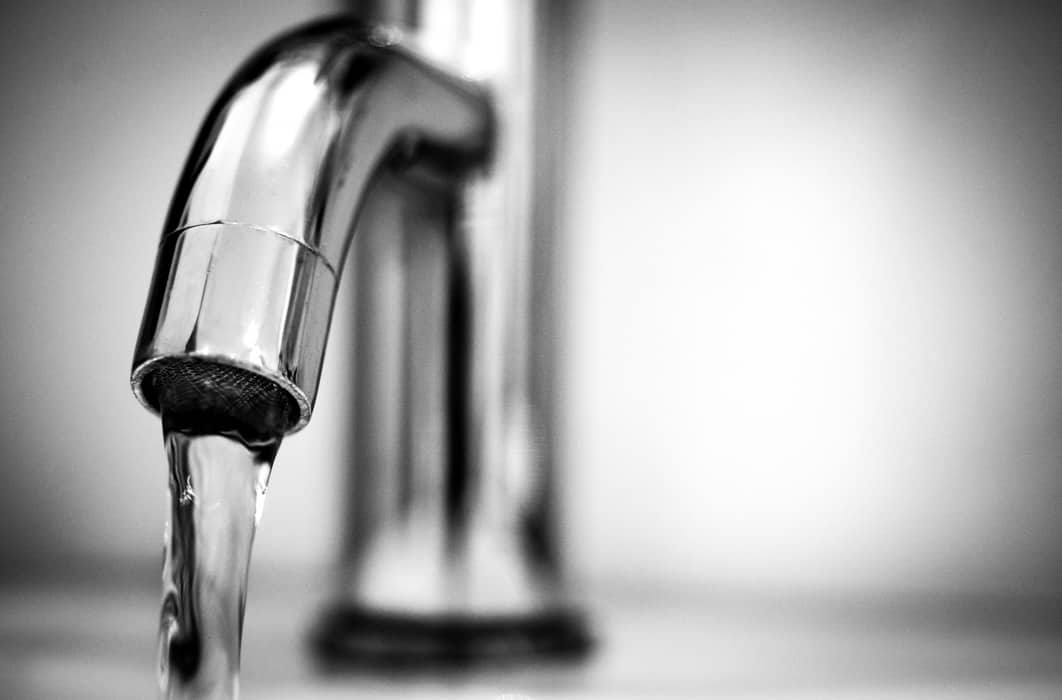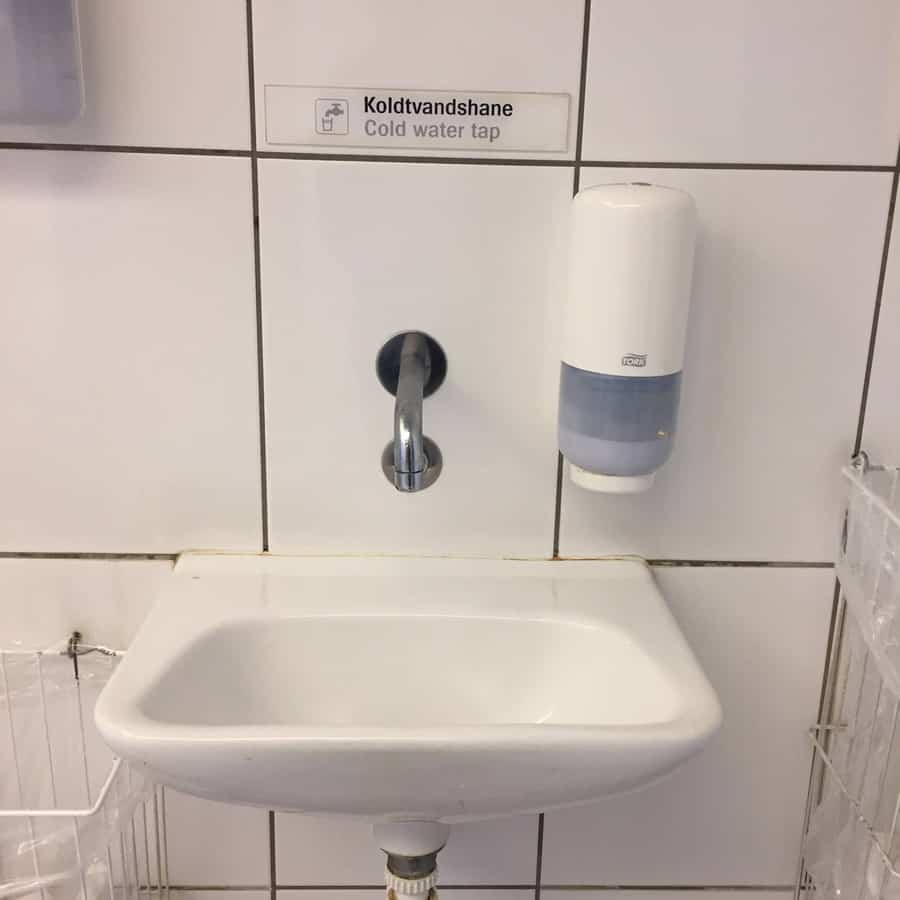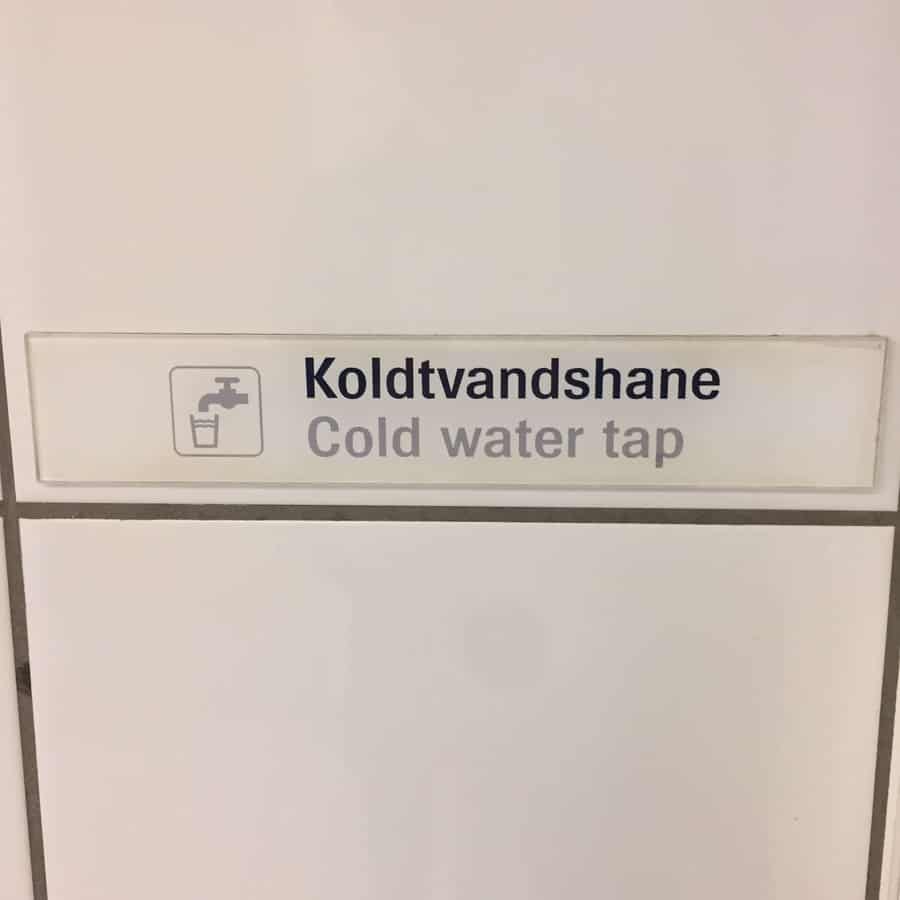This post contains affiliate links. If you click the link and complete a purchase I receive a small commission at no extra cost to you.

The quality of tap water varies a lot, depending on where you are in the world. Actually, there aren’t that many countries in the world, where it’s safe to drink it, which might be surprising for a Dane.
Because in Denmark, it is perfectly safe to drink the water, straight from the tap. In fact, Denmark has the best tap water in the world, according to The Water Delivery Company. That is because, it undergoes strict daily quality controls, which results in very clean and great tasting water – without the chlorine taste and smell you experience elsewhere.
In this post you can read the following:
- The water quality at Copenhagen Airport
- Ordering tap water in restaurants
- Hard water and whether it is bad for you
- Interactive map over water fountains in Copenhagen
What about the water in Copenhagen Airport?
At Copenhagen Airport, you can find water fountains in most of the restrooms. These are clearly marked and are safe to drink from (see images below).
The water at the washbowls might not be safe to drink from, but if this is the case, it will also be clearly marked.



They are better for your health and will last for years.
Here’s a link to some of the best rated water bottles on Amazon.
Can you order tap water at restaurants and is it considered rude?
Yes, you can order tap water and it’s not at all considered rude! Unless you have a urge for bottled mineral water, I would say always order tap water.
Three reasons:
1. It tastes great!
2. You usually get a big jug, instead of a 500ml bottle mineral, which is not nearly enough for one or two thirsty tourists.
3. The price!
Even though most restaurants charge around 20-40DKK for a liter jug of tap water, it’s still much cheaper than the hefty prices for mineral water. Tap water is practically free (0,04DKK for a liter), but in most cases restaurants and cafés still charge a fee. They will have to clean the glassware afterwards and profit is also lost, because chances are that you won’t also order soft-drinks and/or alcohol.
Hardness of the water.
Water hardness is measured in dH (Deutsche Härte) and refers to the amount of dissolved calcium and magnesium in the water. The calcium and magnesium comes from, when the rainwater trickles down the Danish soil. In the Copenhagen area the dH is between 16-23, which categorizes it as hard to very hard.
Is hard water bad for you?
Several studies show that, hard water is not bad for your health. Some people experience that their skin and hair dry out, which can be a nuisance of course. The only things hard water is really bad for are faucets and electric appliances, like the dishwasher, where limestone builds up.
Where can you find water fountains in Copenhagen?

Below you can find a interactive map (sorry in Danish only), with 60 public water fountains spread across Copenhagen. So when you’re out and about and exploring the city, you can always find fresh, clean and free water. Just look for a black cylinder, with a aluminum top, which says drinking water down the side.
The dark blue are available all year, light blue only part of the year and if the symbol is red, the fountain is currently not accessible or out of service.
Need a water bottle for your trip? Check the link earlier in the article. It will take you to the best rated water bottles on Amazon.
